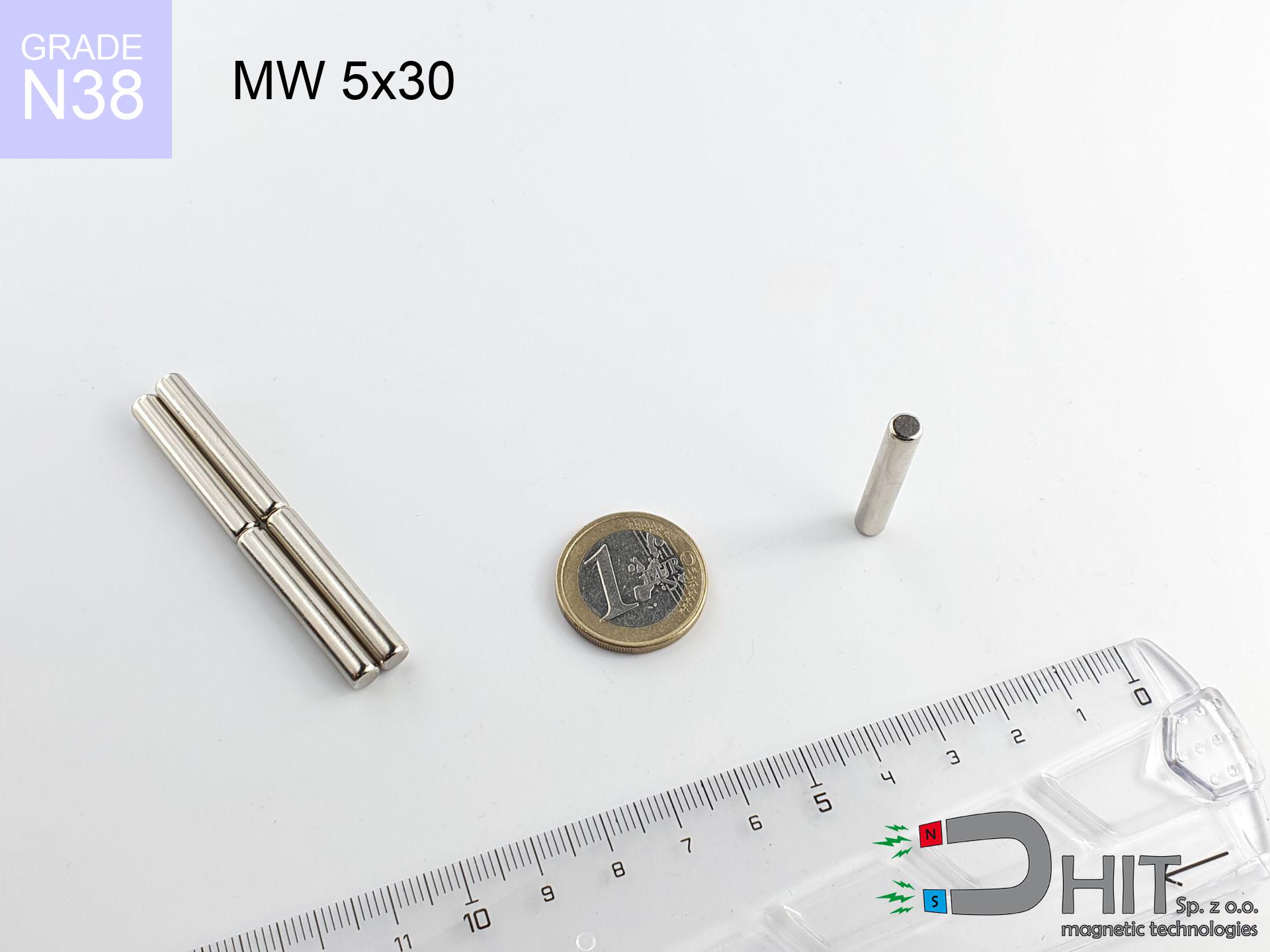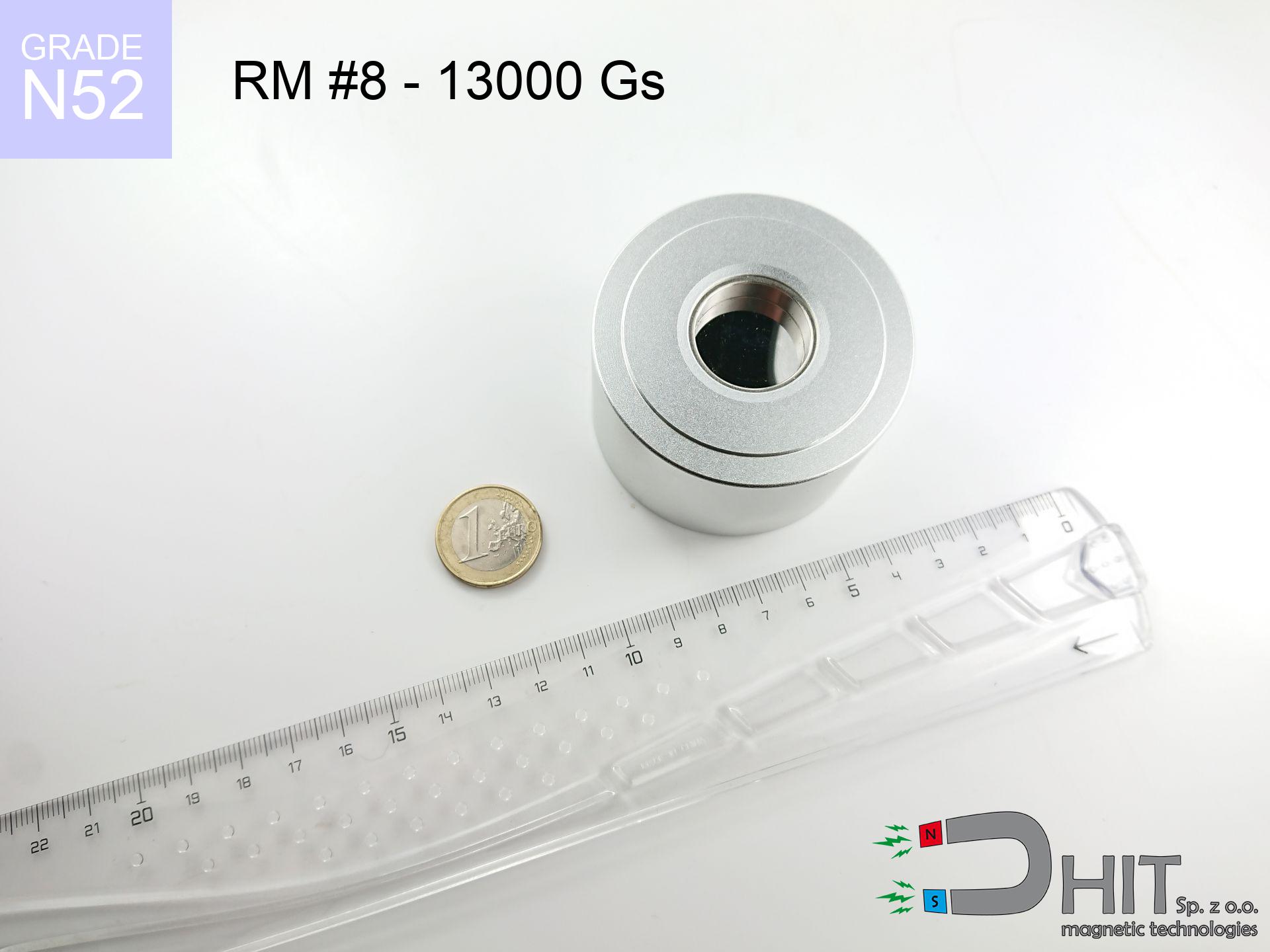UMGGZ 66x8.5 [M8] GZ / N38 - rubber magnetic holder external thread
rubber magnetic holder external thread
Catalog no 340423
GTIN/EAN: 5906301814764
Diameter Ø
66 mm [±1 mm]
Height
8.5 mm [±1 mm]
Weight
100 g
Load capacity
18.40 kg / 180.44 N
23.37 ZŁ with VAT / pcs + price for transport
19.00 ZŁ net + 23% VAT / pcs
bulk discounts:
Need more?
Pick up the phone and ask
+48 888 99 98 98
or let us know by means of
request form
the contact section.
Force as well as shape of a neodymium magnet can be estimated with our
modular calculator.
Order by 14:00 and we’ll ship today!
Physical properties - UMGGZ 66x8.5 [M8] GZ / N38 - rubber magnetic holder external thread
Specification / characteristics - UMGGZ 66x8.5 [M8] GZ / N38 - rubber magnetic holder external thread
| properties | values |
|---|---|
| Cat. no. | 340423 |
| GTIN/EAN | 5906301814764 |
| Production/Distribution | Dhit sp. z o.o. |
| Country of origin | Poland / China / Germany |
| Customs code | 85059029 |
| Diameter Ø | 66 mm [±1 mm] |
| Height | 8.5 mm [±1 mm] |
| Weight | 100 g |
| Load capacity ~ ? | 18.40 kg / 180.44 N |
| Manufacturing Tolerance | ±1 mm |
Magnetic properties of material N38
| properties | values | units |
|---|---|---|
| remenance Br [min. - max.] ? | 12.2-12.6 | kGs |
| remenance Br [min. - max.] ? | 1220-1260 | mT |
| coercivity bHc ? | 10.8-11.5 | kOe |
| coercivity bHc ? | 860-915 | kA/m |
| actual internal force iHc | ≥ 12 | kOe |
| actual internal force iHc | ≥ 955 | kA/m |
| energy density [min. - max.] ? | 36-38 | BH max MGOe |
| energy density [min. - max.] ? | 287-303 | BH max KJ/m |
| max. temperature ? | ≤ 80 | °C |
Physical properties of sintered neodymium magnets Nd2Fe14B at 20°C
| properties | values | units |
|---|---|---|
| Vickers hardness | ≥550 | Hv |
| Density | ≥7.4 | g/cm3 |
| Curie Temperature TC | 312 - 380 | °C |
| Curie Temperature TF | 593 - 716 | °F |
| Specific resistance | 150 | μΩ⋅cm |
| Bending strength | 250 | MPa |
| Compressive strength | 1000~1100 | MPa |
| Thermal expansion parallel (∥) to orientation (M) | (3-4) x 10-6 | °C-1 |
| Thermal expansion perpendicular (⊥) to orientation (M) | -(1-3) x 10-6 | °C-1 |
| Young's modulus | 1.7 x 104 | kg/mm² |
Chemical composition
| iron (Fe) | 64% – 68% |
| neodymium (Nd) | 29% – 32% |
| boron (B) | 1.1% – 1.2% |
| dysprosium (Dy) | 0.5% – 2.0% |
| coating (Ni-Cu-Ni) | < 0.05% |
Ecology and recycling (GPSR)
| recyclability (EoL) | 100% |
| recycled raw materials | ~10% (pre-cons) |
| carbon footprint | low / zredukowany |
| waste code (EWC) | 16 02 16 |
Other proposals
Strengths as well as weaknesses of neodymium magnets.
Strengths
- They do not lose magnetism, even over nearly 10 years – the decrease in power is only ~1% (according to tests),
- They possess excellent resistance to weakening of magnetic properties when exposed to opposing magnetic fields,
- In other words, due to the metallic layer of nickel, the element gains visual value,
- Magnets are characterized by exceptionally strong magnetic induction on the outer layer,
- Neodymium magnets are characterized by extremely high magnetic induction on the magnet surface and are able to act (depending on the shape) even at a temperature of 230°C or more...
- Thanks to flexibility in forming and the capacity to customize to unusual requirements,
- Versatile presence in electronics industry – they are utilized in hard drives, electric motors, advanced medical instruments, also industrial machines.
- Relatively small size with high pulling force – neodymium magnets offer impressive pulling force in tiny dimensions, which allows their use in small systems
Limitations
- At very strong impacts they can break, therefore we recommend placing them in strong housings. A metal housing provides additional protection against damage, as well as increases the magnet's durability.
- We warn that neodymium magnets can reduce their strength at high temperatures. To prevent this, we advise our specialized [AH] magnets, which work effectively even at 230°C.
- They oxidize in a humid environment. For use outdoors we advise using waterproof magnets e.g. in rubber, plastic
- Due to limitations in producing threads and complicated shapes in magnets, we recommend using cover - magnetic mount.
- Potential hazard to health – tiny shards of magnets pose a threat, if swallowed, which becomes key in the context of child safety. It is also worth noting that small components of these products are able to complicate diagnosis medical when they are in the body.
- With large orders the cost of neodymium magnets is a challenge,
Pull force analysis
Breakaway strength of the magnet in ideal conditions – what affects it?
- on a base made of structural steel, optimally conducting the magnetic field
- with a thickness no less than 10 mm
- with a plane free of scratches
- without the slightest air gap between the magnet and steel
- under axial application of breakaway force (90-degree angle)
- in temp. approx. 20°C
Lifting capacity in real conditions – factors
- Distance (betwixt the magnet and the metal), as even a microscopic distance (e.g. 0.5 mm) results in a reduction in force by up to 50% (this also applies to varnish, corrosion or dirt).
- Angle of force application – maximum parameter is reached only during perpendicular pulling. The force required to slide of the magnet along the plate is standardly several times lower (approx. 1/5 of the lifting capacity).
- Base massiveness – insufficiently thick steel does not accept the full field, causing part of the flux to be wasted into the air.
- Material composition – different alloys attracts identically. High carbon content weaken the attraction effect.
- Plate texture – ground elements guarantee perfect abutment, which improves field saturation. Uneven metal weaken the grip.
- Temperature influence – high temperature reduces pulling force. Too high temperature can permanently damage the magnet.
Holding force was checked on the plate surface of 20 mm thickness, when the force acted perpendicularly, in contrast under parallel forces the holding force is lower. Additionally, even a minimal clearance between the magnet’s surface and the plate reduces the lifting capacity.
Safe handling of neodymium magnets
Health Danger
Medical warning: Neodymium magnets can turn off heart devices and defibrillators. Do not approach if you have electronic implants.
Safe distance
Intense magnetic fields can corrupt files on payment cards, hard drives, and other magnetic media. Stay away of at least 10 cm.
Demagnetization risk
Avoid heat. Neodymium magnets are sensitive to heat. If you need operation above 80°C, ask us about special high-temperature series (H, SH, UH).
Shattering risk
Despite metallic appearance, neodymium is delicate and cannot withstand shocks. Avoid impacts, as the magnet may shatter into sharp, dangerous pieces.
Respect the power
Handle with care. Neodymium magnets act from a long distance and snap with huge force, often quicker than you can react.
Threat to navigation
GPS units and smartphones are extremely susceptible to magnetism. Close proximity with a strong magnet can decalibrate the sensors in your phone.
Keep away from children
Absolutely keep magnets away from children. Choking hazard is significant, and the consequences of magnets clamping inside the body are tragic.
Allergic reactions
Certain individuals suffer from a hypersensitivity to nickel, which is the typical protective layer for NdFeB magnets. Prolonged contact can result in dermatitis. We recommend wear safety gloves.
Mechanical processing
Fire warning: Rare earth powder is highly flammable. Avoid machining magnets in home conditions as this may cause fire.
Pinching danger
Protect your hands. Two powerful magnets will join immediately with a force of massive weight, crushing everything in their path. Be careful!

![Rubber coated magnetic holder UMGGZ 66x8.5 [M8] GZ / N38 Rubber coated magnetic holder UMGGZ 66x8.5 [M8] GZ / N38](https://cdn3.dhit.pl/graphics/banners/magnet.webp)
![UMGGZ 66x8.5 [M8] GZ / N38 - rubber magnetic holder external thread](https://cdn3.dhit.pl/graphics/products/umggz-66x8.5-m6-gz-gas.jpg)


![UMGGW 66x8.5 [M8] GW / N38 - magnetic holder rubber internal thread UMGGW 66x8.5 [M8] GW / N38 - magnetic holder rubber internal thread](https://cdn3.dhit.pl/graphics/products/umg-66x8.5-m6-gw-wud.jpg)


